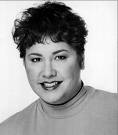|
|
||||
|
by Joanne Ross  One film appears on almost every list of 2007 awards or nominations to date. And recently, No Country for Old Men received eight Academy Award nominations, tying with There Will Be Blood in the upcoming Oscar race. Why is this latest movie from the Coen Brothers garnering so much attention? In general, I think it’s because No Country for Old Men is more than a gritty crime/pseudo chase film. It operates on a much broader level than a genre flick and has far more resonance -- it’s not just simple entertainment, it’s Art. Elements which matter the most in this extraordinary film are its universal themes, production values, cinematography, background music, and the performances of the actors. Universal Themes. Important themes are at work here: chance vs. fate, the concept of the hero’s “tragic flaw” (greed), and justice vs. injustice. Chance vs. fate emerges as the theme at the film’s core, symbolically represented by one character’s penchant for tossing a coin to determine a given situation’s outcome -- heads or tails, live or die. It is “chance” that leads another man to shoot at and miss the antelope but hit the jackpot -- $2 million in a briefcase. Working in concert with that theme, the hero’s “tragic flaw” causes the movie’s main character, Llewellyn (Josh Brolin), to take actions or make decisions leading to his downfall. Greed and opportunity induce him to grab the loot. Oddly, though, if he would have left it at that, he could have escaped undetected. Greed put his life in jeopardy, but misplaced compassion sealed his fate. Production Values and Art Direction. No Country for Old Men is set in gritty, ugly country, peopled with, for the most part, gritty, ugly individuals engaged in gritty, ugly business. The only “good” people are a confused wife and her mother plus the assorted innocent bystanders who get caught in the crossfire, and of course, Sheriff Ed Tom Bell (Tommy Lee Jones), the moral center of the film. Realism looms large in a movie like this. The story takes place in a desert town near the Mexican border. There is nothing glamorous about the townspeople or the atmosphere. The terrain is rough, the temperature is hot. Appropriately, the film is shot on location, not on sets. There’s violence and blood, as one would expect given the plot. And the director doesn't spare your sensibilities. You feel the dirt and grime under your nails, sand and dust on your clothing, the heat on your back, and the sweat tricking down your face. Background Music and Cinematography. Properly understood and skillfully handled, music becomes a key component of a movie. In the hands of a hack, it can be akin to slathering gobs of sweet, but flavorless, butter cream frosting onto a gourmet cake. It’s pretty, it might even taste good, but it adds nothing. What I noticed immediately about this movie was the absence of background music, a decision I applaud. After learning the virtues of silence by watching Stanley Kubrick films, I always ask myself, “Can the story, the drama, and the acting “speak” on it’s own without the aid of music?” Music can often act as a signpost or cue to the audience. Oh, here’s a touching moment, let’s bring in some soft strings. Or, here, we are headed into battle, so let’s have drums, crashing cymbals, and the like. When the Coen brothers’ camera gives us long shots of wide open, barren desert, I don’t need any music to tell me how to act. I feel small and insignificant in that expanse of land. I sense the isolation. The quiet, except for the rustling of the wind and the threat of thunder in the distance, is unnerving. The cinematography on its own gives me the creeps. Using background music in those scenes would have robbed the cinematography of its punch. The location and camera shots change as the hunt begins, paralleling the plot and the hero’s psychological state. In the beginning, we have many long shots of open spaces. Nobody knows where the money is, nobody knows who took it. But then Anton (Javier Bardem), a psychopathic killer wielding an oxygen tank and a cattle gun, learns who has the loot and gives chase. From the wide open spaces of the desert, we go to confined hotel rooms, and tighter shots, and Llewellyn’s wiggle room shrinks as his pursuer bears down on him. Performances. Performances of the principal players are stripped down and powerful here. These are people of few words (particularly Bardem’s menacing character), so those words must have conviction. Moreover, the actors’ faces and body language must speak as well. Bardem’s acting, in particular, is exceptionally chilling -- his voice simultaneously hypnotic and scary. From his cold, unblinking stare, to his unusual stance, much of what he must convey has to come from his face, eyes, and the way he holds and moves his body. In each of Bardem’s scenes, I instinctively tensed up. To me, he personified a powder keg ready to blow. I didn't need ominous music playing in the background to tell me something bad would happen. Just looking at Bardem told me that. No Country for Old Men is one of the best movies I’ve ever seen. Period. No wonder it’s winning so many awards. (Photo: Joanne Ross) |
||
|
© 2025 - ReelTalk Movie Reviews Website designed by Dot Pitch Studios, LLC |



